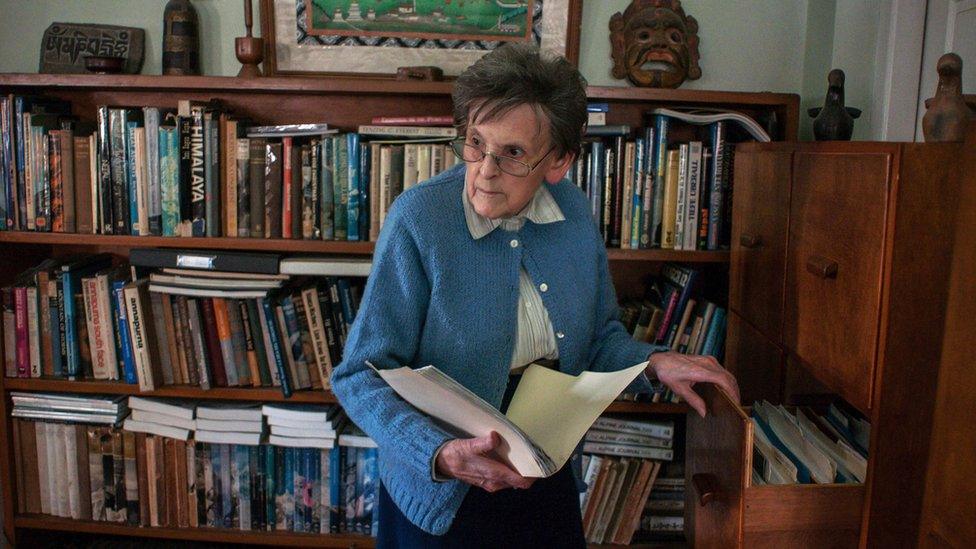Elizabeth Hawley: 'Chronicler of the Himalayas' dies at 94
- Published

Ms Hawley has been called "the Oracle of Himalayan climbing"
Elizabeth Hawley, who chronicled hiking expeditions on the Himalayas for over 50 years, has died in Nepal aged 94.
The US journalist was a leading authority on the world's highest mountain, Mount Everest, despite never having reached its base camp.
She was seen as a key person to authenticate climbs, keeping meticulous records and verifying claims about successful expeditions.
Tributes have been pouring in from the climbing community.
She died in a Kathmandu hospital on Friday, a week after catching a lung infection.
'The Sherlock Holmes of mountaineering'
Part investigator, part librarian, Ms Hawley had been documenting Himalayan climbs since 1963.
She founded the Himalayan Database, a thorough archive of more than 9,600 expedition teams, which she managed until five years ago.
The database is unofficial, but is seen as the most authoritative record of successful climbs in the Himalayas.
Allow Twitter content?
This article contains content provided by Twitter. We ask for your permission before anything is loaded, as they may be using cookies and other technologies. You may want to read and before accepting. To view this content choose ‘accept and continue’.
Ms Hawley built a reputation of being a formidable, sharp-tongued judge - driving her blue Volkswagen Beetle across Kathmandu to interrogate climbers claiming to have set new records.
"I don't mean to frighten people, but maybe I've acquired this aura of being the arbitrator," she told the 91Èȱ¬ in 2010.
"It might scare them into telling me the truth and that might be useful."
Ms Hawley had close friendships with many reputed climbers including Sir Edmund Hillary, one of the first men to reach the top of Mount Everest, who reportedly called her "the Sherlock Holmes of the mountaineering world".
Meanwhile, fellow journalists described her as "one of a kind" and obsessed with getting facts right.
Ms Hawley was a leading authority on Mount Everest expeditions
Ms Hawley was born in 1923 in Chicago, and graduated from the University of Michigan in 1946. She later worked as a researcher for Fortune magazine.
She was inspired to move to Nepal in 1960, after giving up her job in New York and visiting Kathmandu on a round-the-world trip in 1957, shortly after it opened up to foreign tourists.
At that time Nepalese women were rarely seen in public and a single, foreign woman in her thirties living alone in Kathmandu was regarded as a curiosity.
She worked for Reuters news agency, covering mountaineering news, including the first successful US expedition to Everest in 1963.
As a journalist, Ms Hawley covered a string of milestones, from the first Everest summit by a woman - Japan's Junko Tabei in 1975 - to the first solo ascent five years later by Italian Reinhold Messner.
Ms Hawley's death has caused concern among mountaineering officials and experts in Nepal, who worry about whether the Himalayan Database will continue.
However, the meticulous chronicler's name will live on. A mountain in north-west Nepal, bordering Tibet, was named Peak Hawley in her honour in 2014.
- Published28 August 2010